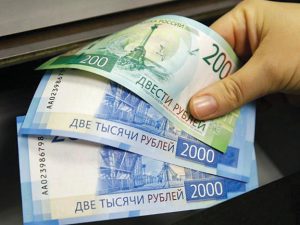Bloomberg
Russian stocks and bonds slumped as traders weighed the risks of escalating tensions over Ukraine.
The benchmark MOEX index was down more than 3%, dragged lower by losses in Sberbank PJSC and natural-gas exporter Gazprom PJSC. Russia’s cost of borrowing in dollars surged the most in two years as yields on 2029 bonds jumped nearly 60 basis points. The Ukrainian hryvnia tumbled.
Meanwhile, the ruble steadied as traders looked to diplomatic moves this week aimed at defusing tensions. The currency was little changed at 77.1775 per dollar in Moscow after Friday’s 2.8% slump.
US warnings that Moscow could invade as early as this week have sent shockwaves through global markets. After a weekend phone call between US President Joe Biden and Vladimir Putin proved inconclusive, traders will be watching German Chancellor Olaf Scholz’s meeting with the Russian president scheduled for Tuesday.
Moscow has repeatedly denied it plans to invade its neighbour. “Markets are heavily tilted toward a defensive mood, with the potential escalation of conflict between global superpowers drawing a clear step away from taking on risks,†said Jun Rong Yeap, a strategist at IG Asia Pte.
“Any breakdown of diplomatic efforts will be a catalyst for further market panic.†The geopolitical risks rippled through global markets, sending crude oil, Russia’s key export earner, surging and supporting demand for havens such as sovereign debt and the Swiss franc.
Ruble bonds extended their slide after the jumbo rate hike by the Bank of Russia. Yields on 10-year notes rose 35 basis points, taking their surge since the decision to 76 basis points.
The ruble is still the worst performer in emerging markets this year and derivatives traders remain firmly negative. One-month risk reversals show traders are the most bearish on the ruble compared with developing-nation peers.
The currency of the world’s largest energy exporter is failing to benefit from Brent crude’s dash toward $100 per barrel.
The correlation between the ruble and crude futures has turned negative, meaning they no longer track each other, and the two assets are diverging by the most in three years.
 The Gulf Time Newspaper One of the finest business newspapers in the UAE brought to you by our professional writers and editors.
The Gulf Time Newspaper One of the finest business newspapers in the UAE brought to you by our professional writers and editors.
